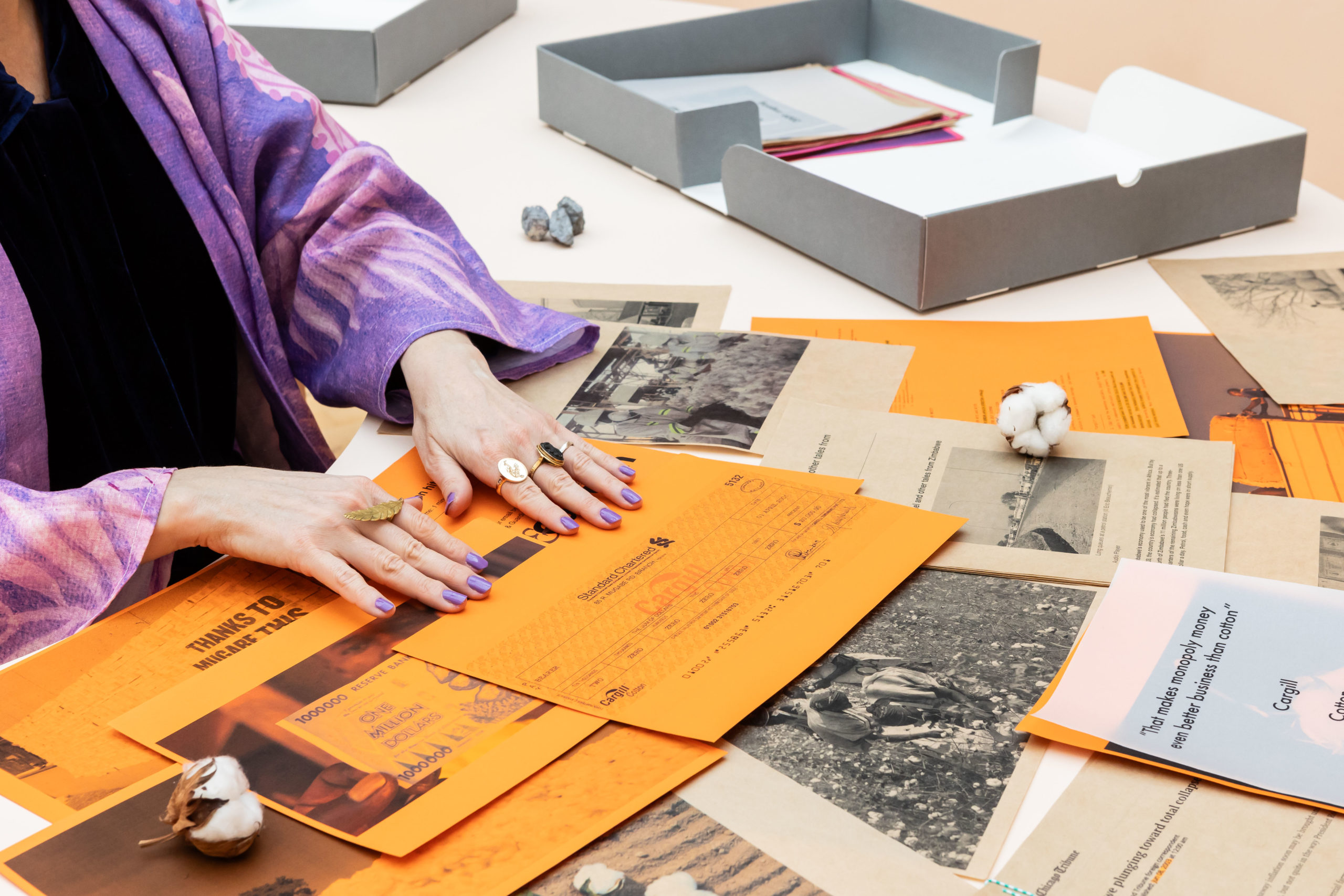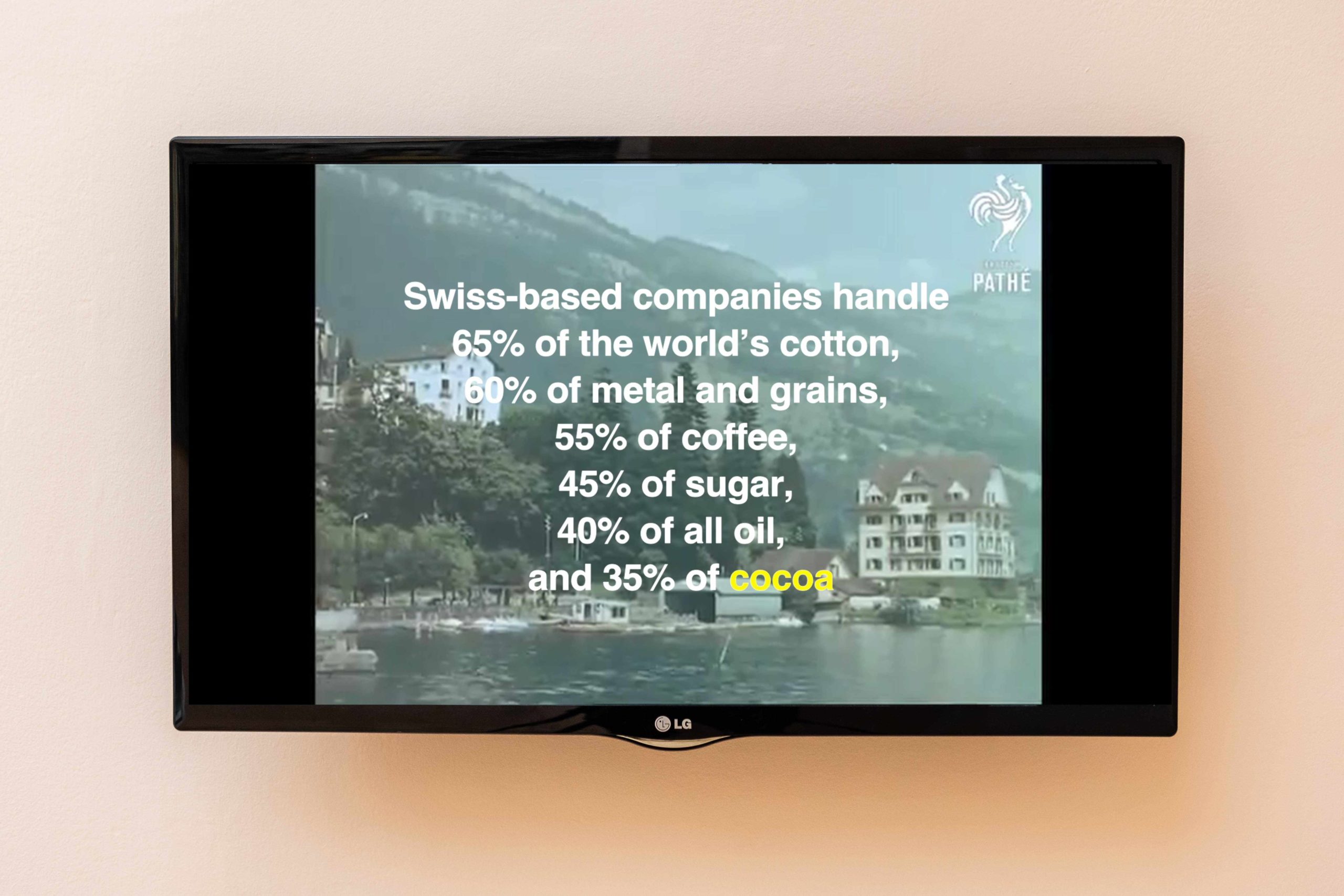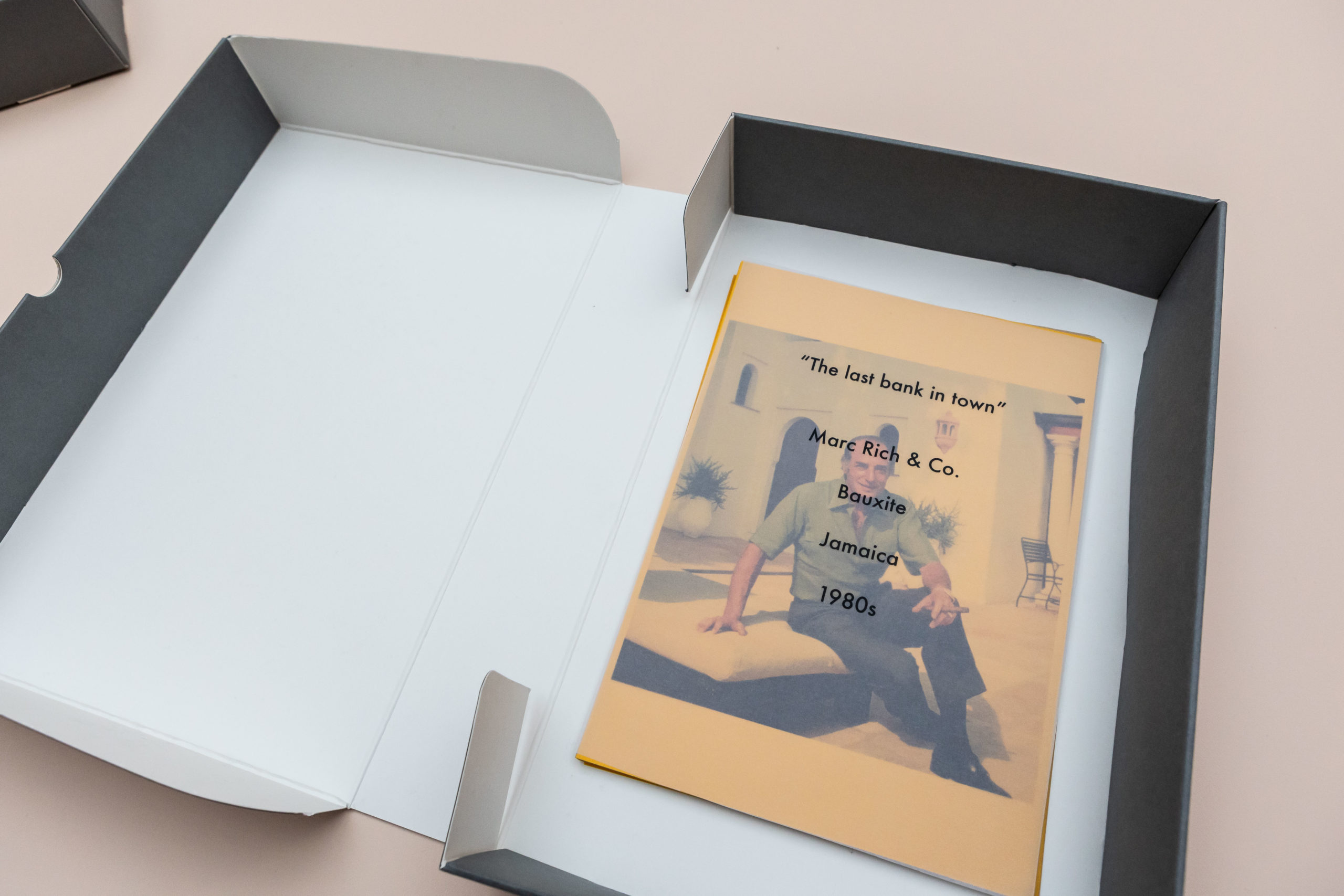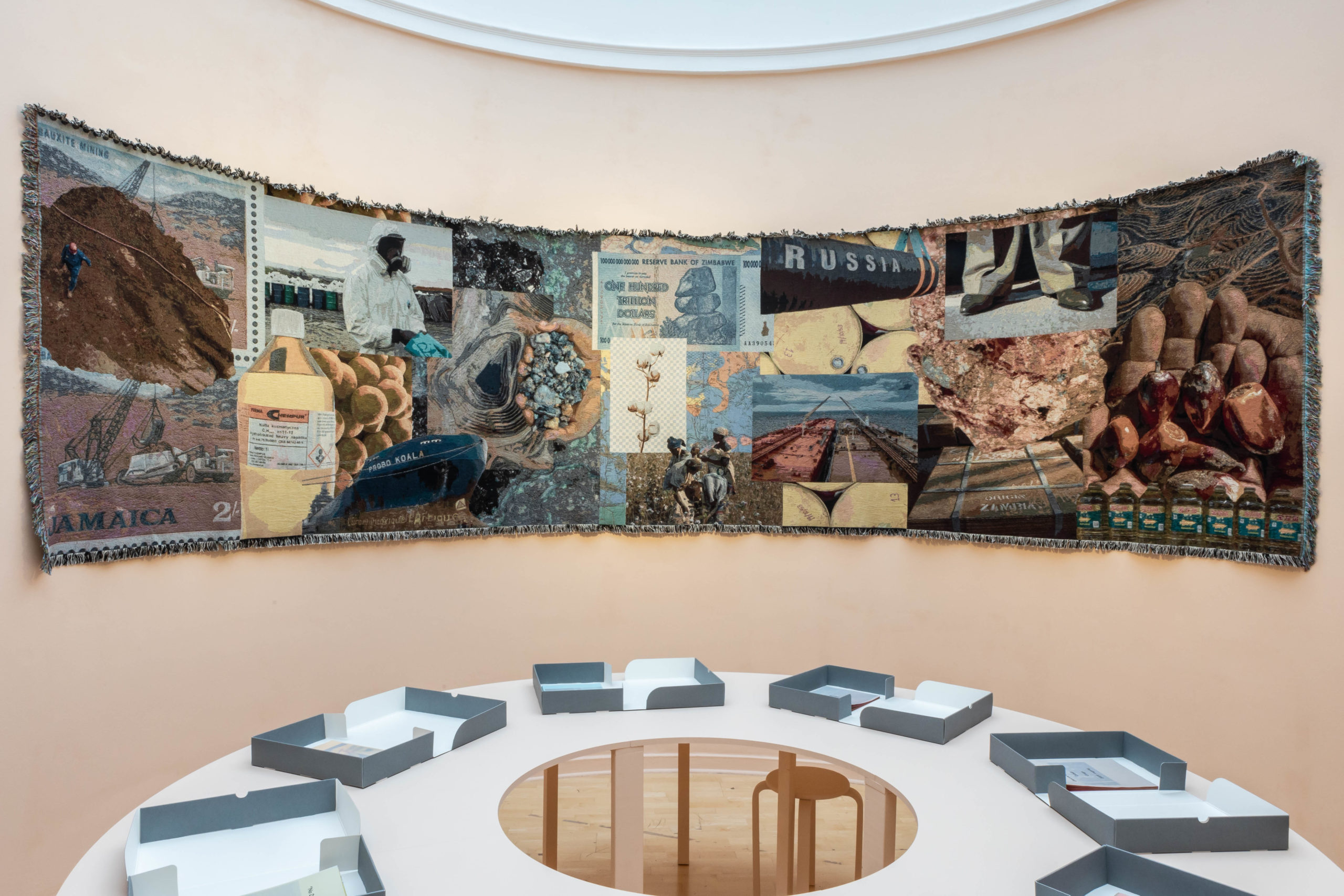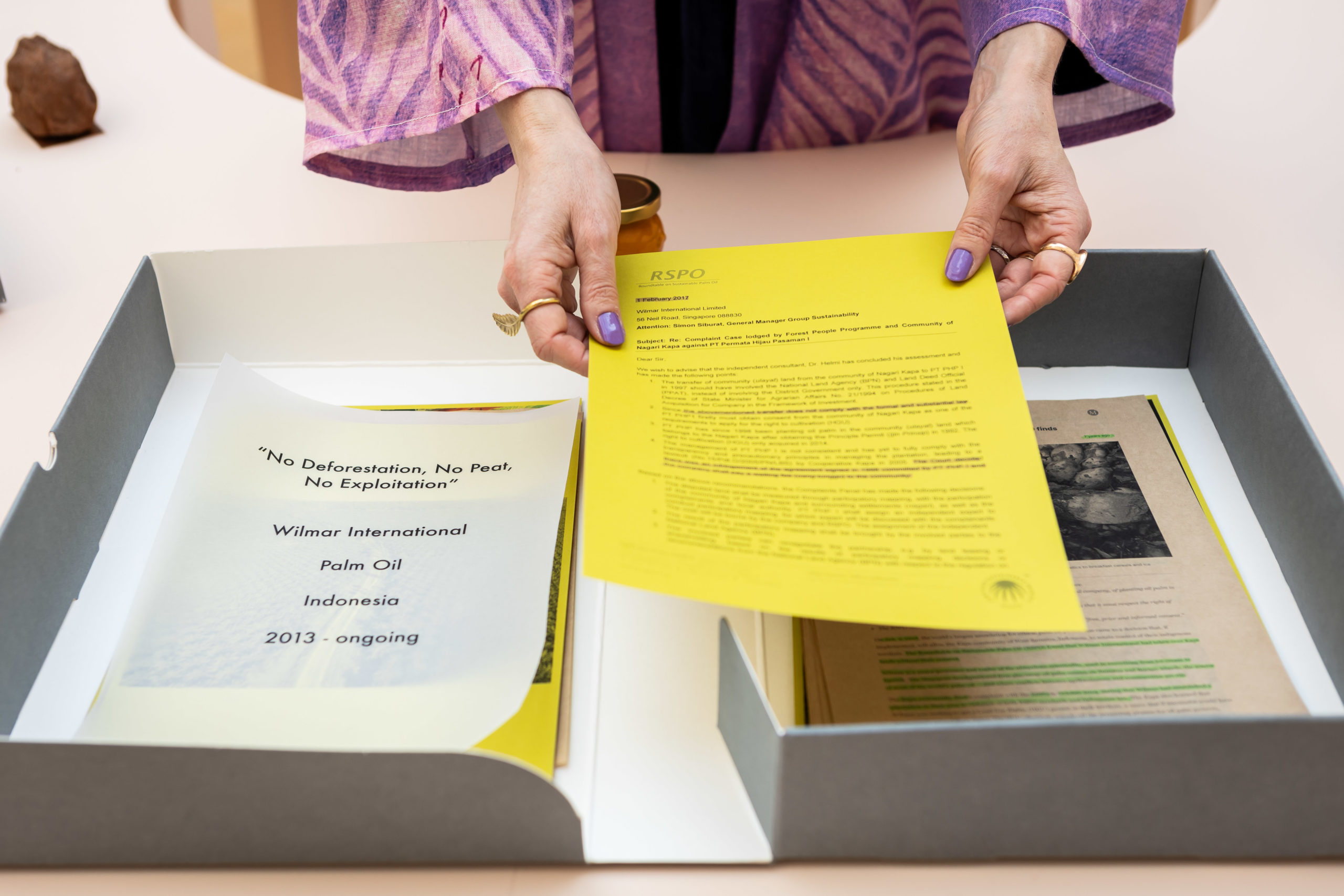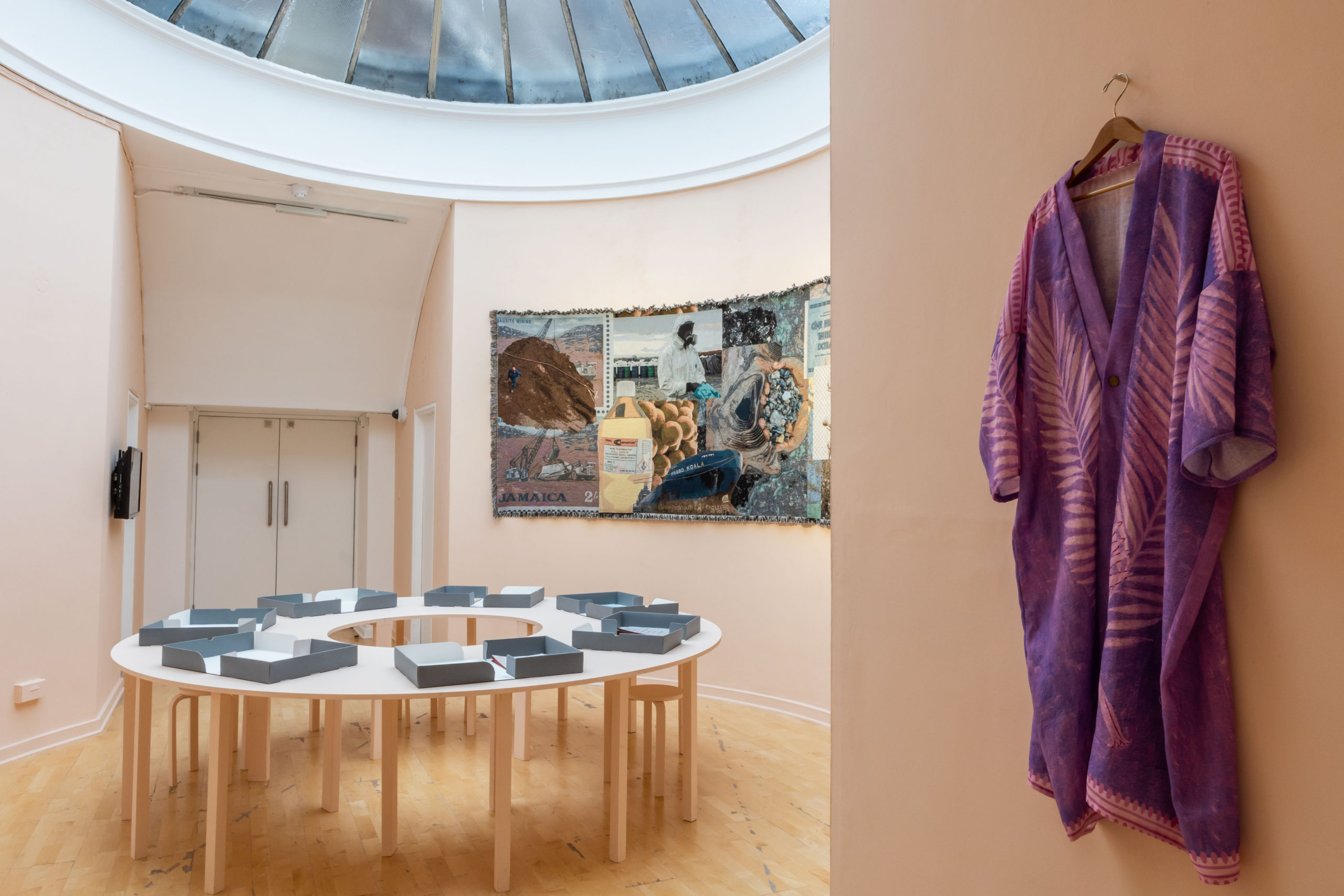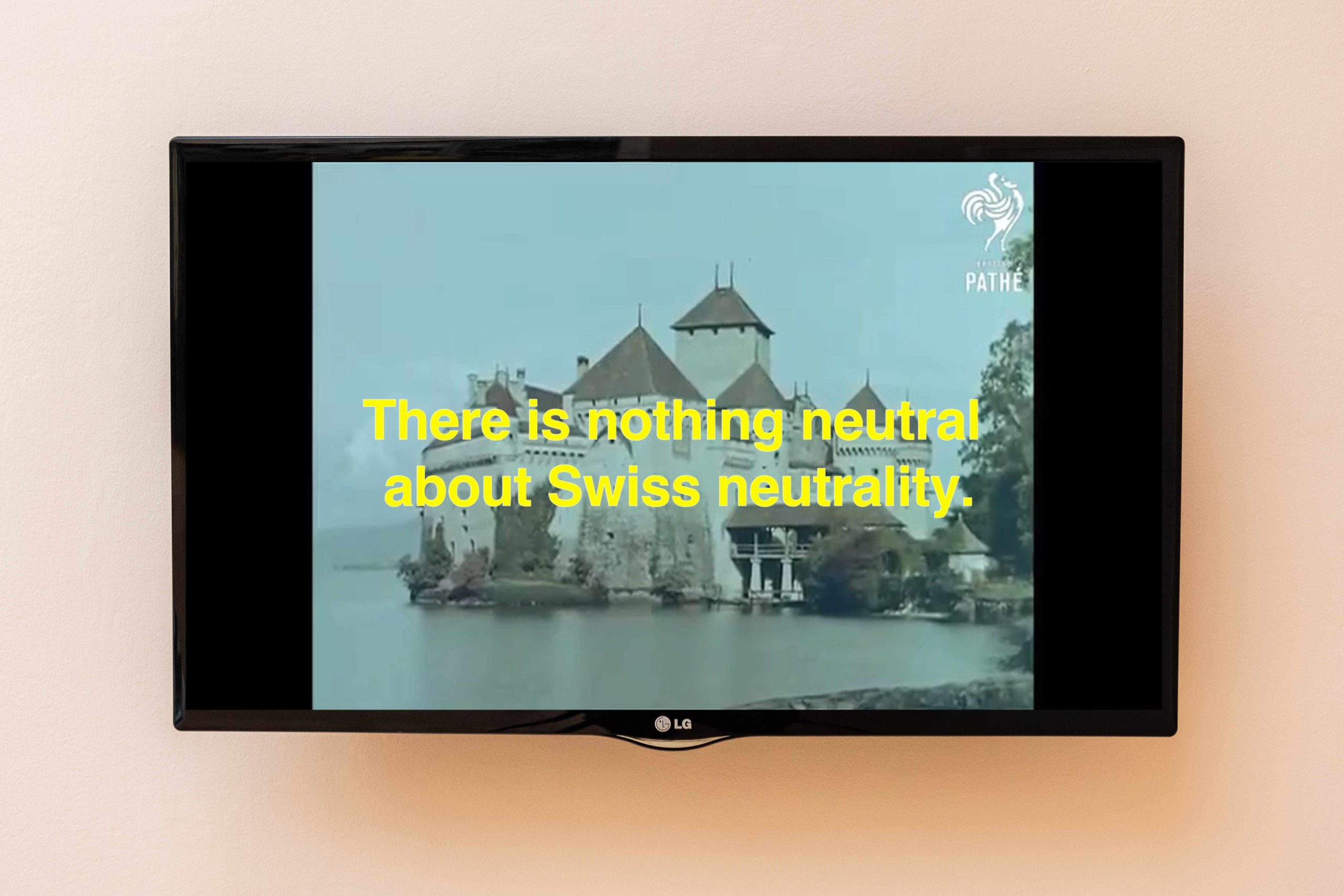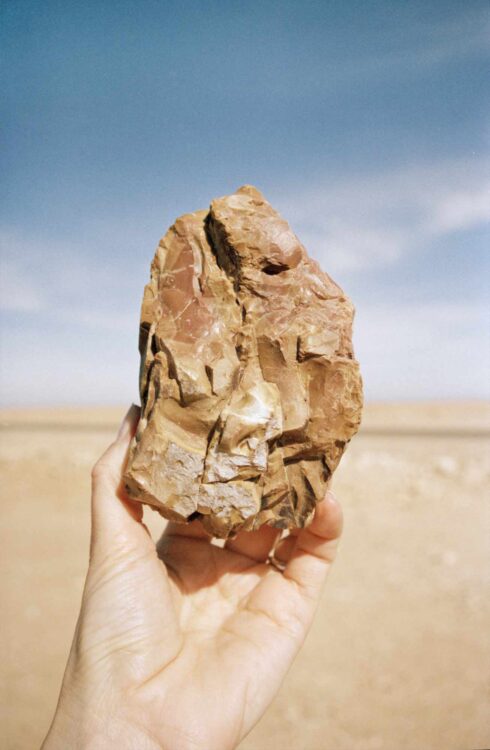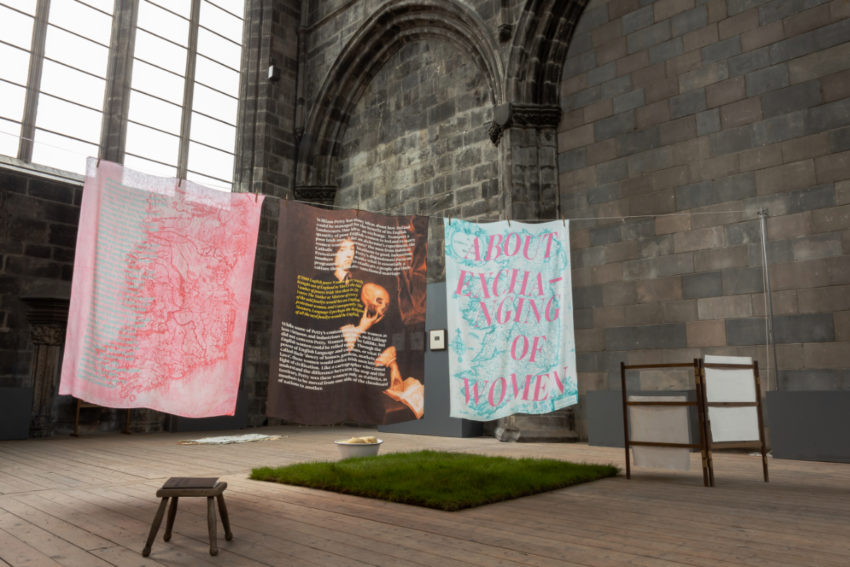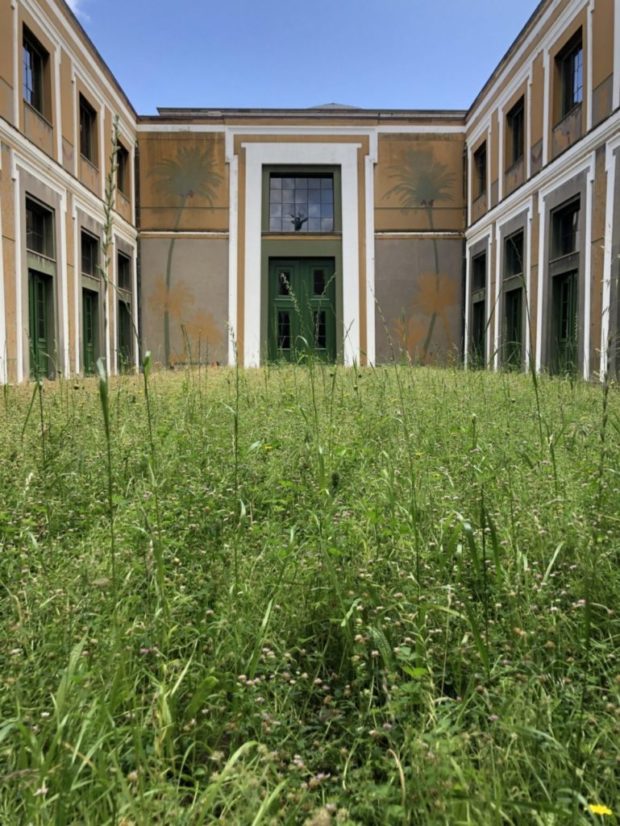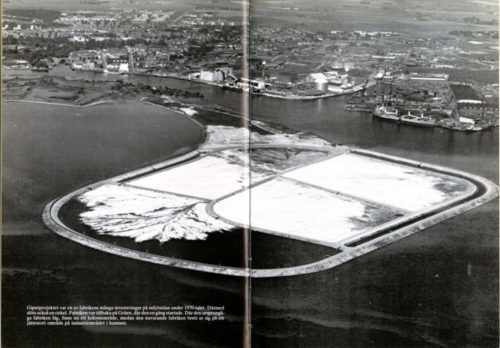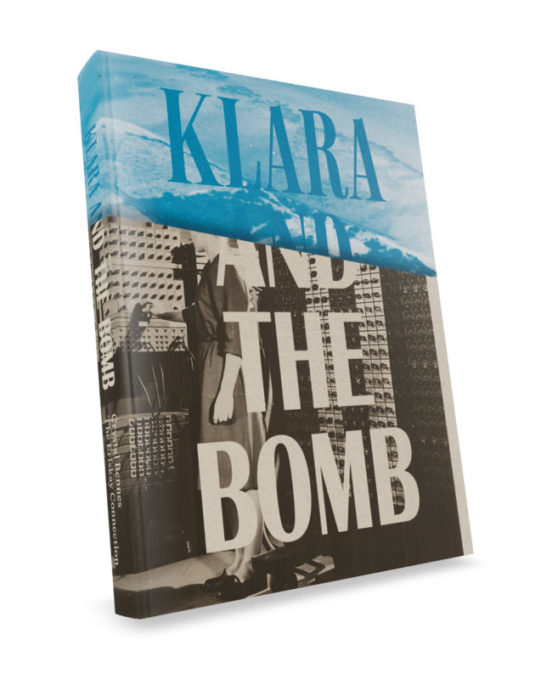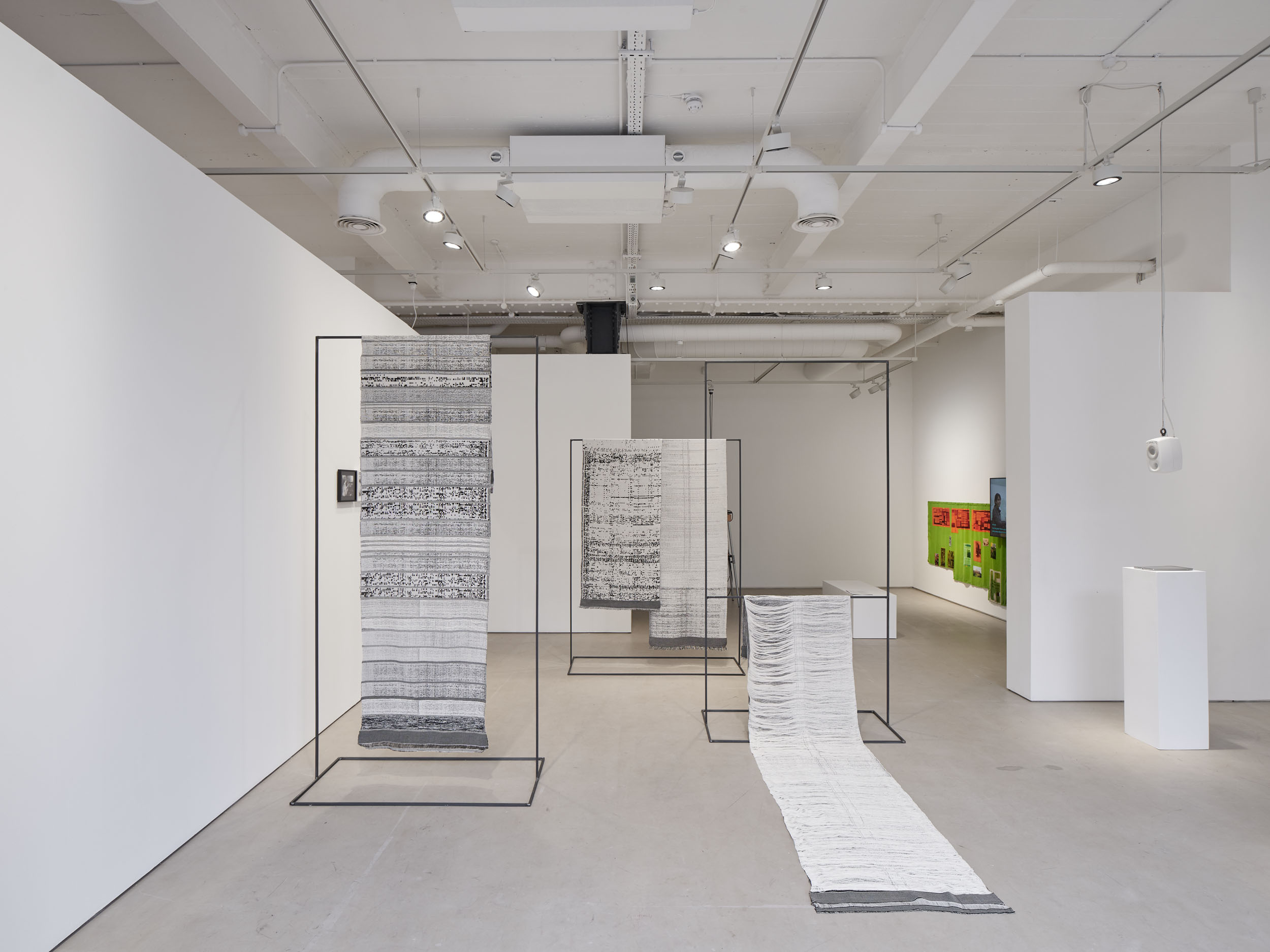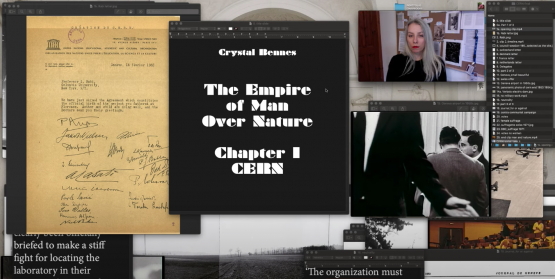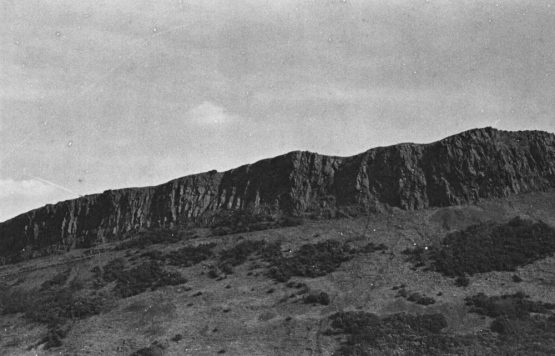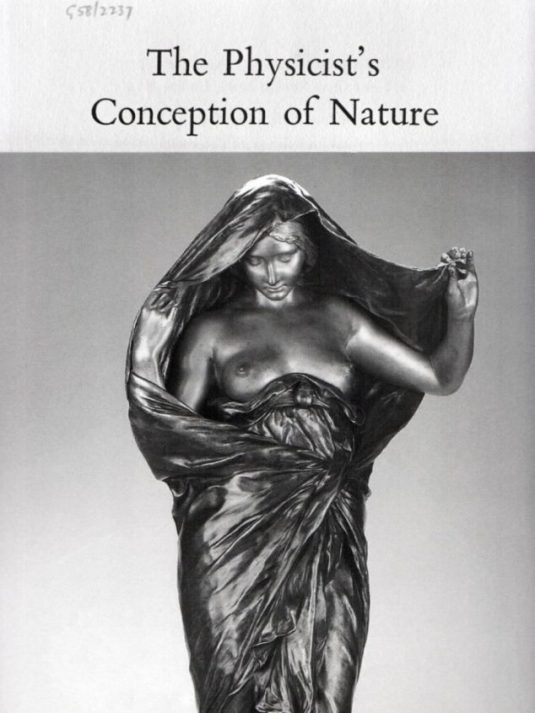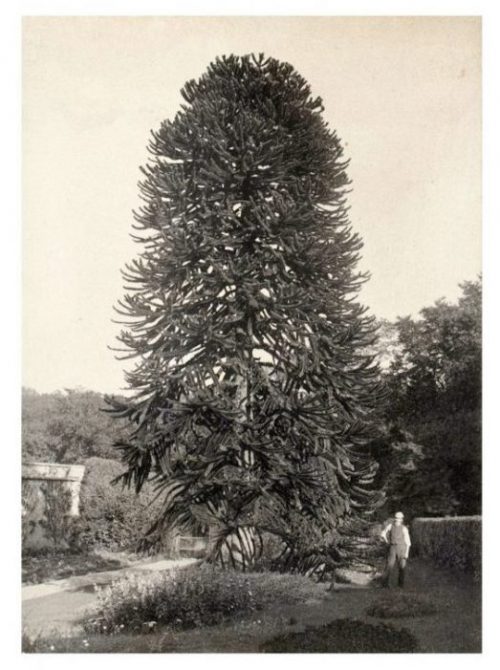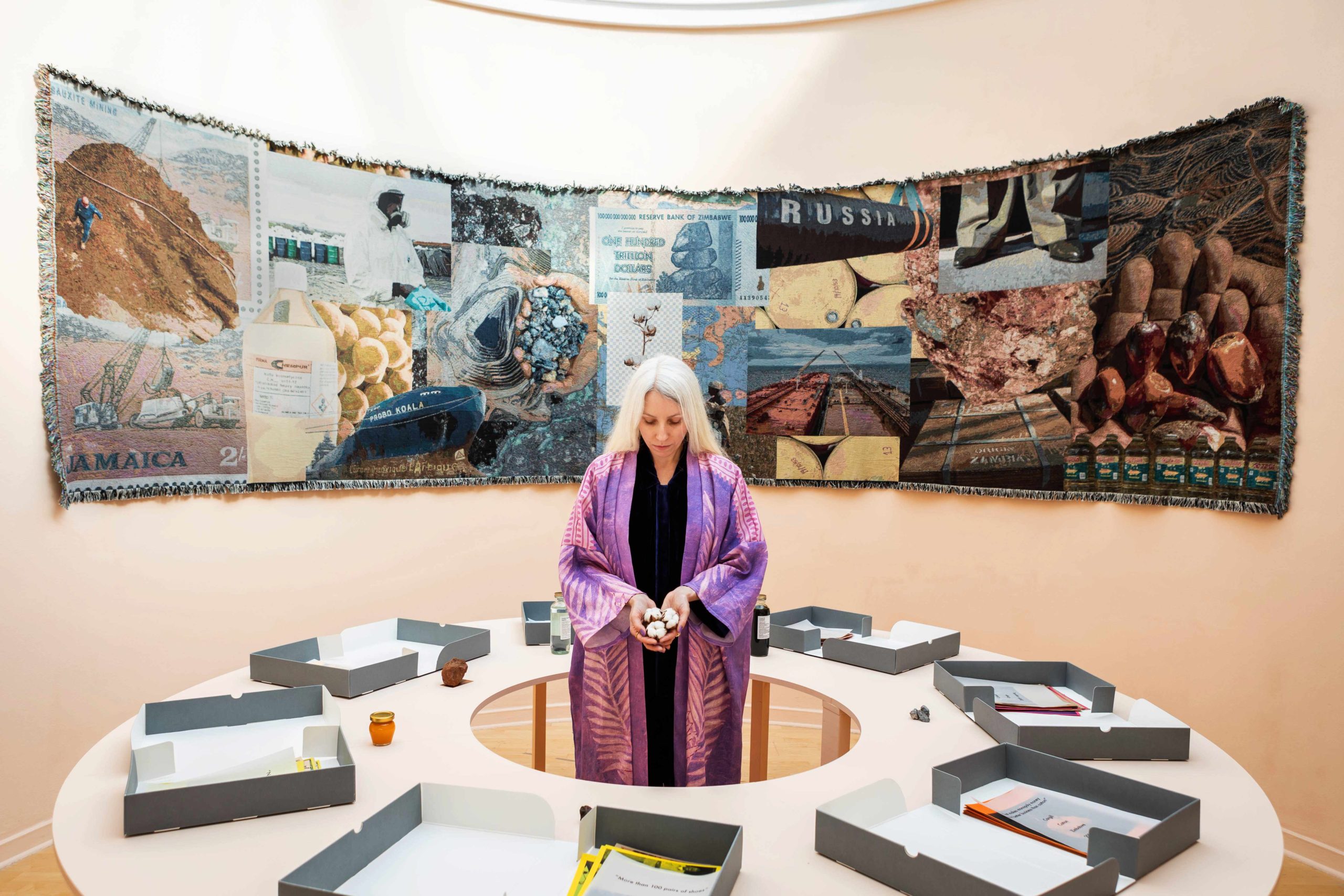
O (copper, cotton, cobalt, crude, naphtha, bauxite, palm), 2024
Installation, including bespoke table, conservation boxes, constructed archive, Financial Times pink paint and divination robe – with scheduled performances.
The Neutral State, 2024
Silent film on monitor, 13 mins
Pecunia non olet
[“money has no smell”], 2024
Machine-woven Jacquard tapestry
“Crystal Bennes’s new project O (copper, cotton, cobalt, crude, naphtha, bauxite, palm) addresses the rapaciousness and sophistry of commodities trading, an arena in which financial instruments, including options and derivatives, are used to bet on the future value of resources such as oil, metals, coffee and cotton. Through tapestry, sculptural installation, video and performance, the artist draws on her instincts and expertise as a wayward academic researcher, investigating the histories of science to uncover the mechanisms and dramatis personae of this opaque and often corrupt world.
The tapestry synthesises seven case studies relating to the fiscal malpractice of some of the world’s largest commodities trading companies. As explored in the accompanying video The Neutral State, all are connected through their use of Switzerland as a tax and regulatory haven. Companies include Glencore, known for its copper mines in Zambia, where it dodged tax for 20 years while claiming losses, and Cargill, infamous for printing its own currency in Zimbabwe to pay cotton farmers during a period of high inflation
Commodities trading is often a rigged game where insiders have access to privileged information that is exploited to their advantage. Yet what Bennes will perform are narratives from the perspective of ethics that draw on the methodology of open-access research communities and the mystical approach of Pythia, the oracle at Delphi, whose advice was often sought on matters of democratic governance in Ancient Greece. While research seeks to produce definitive conclusions through rigorous examination and collaboration, the oracular mode of consultation and divine peer review often produced ambiguity, allowing for broader interpretation. In the space of art, the one does not necessarily invalidate the other, Bennes suggests. Both operate with perceptions of trustworthiness and veracity. By giving precedence to visual and performative explanation, Bennes conjures a space where discovery and reasoning, evidence and narratives, enmesh with representation, picturing and the live construction of knowledge.”
Above texts are extracts from a commissioned essay written by Mariana Cánepa Luna and Max Andrews of Barcelona-based curatorial duo, Latitudes.
O is currently on show at Talbot Rice Gallery, Edinburgh until 1 June as part of the Talbot Rice Residents exhibition.
Installation photos: Sally Jubb, courtesy Talbot Rice Gallery
